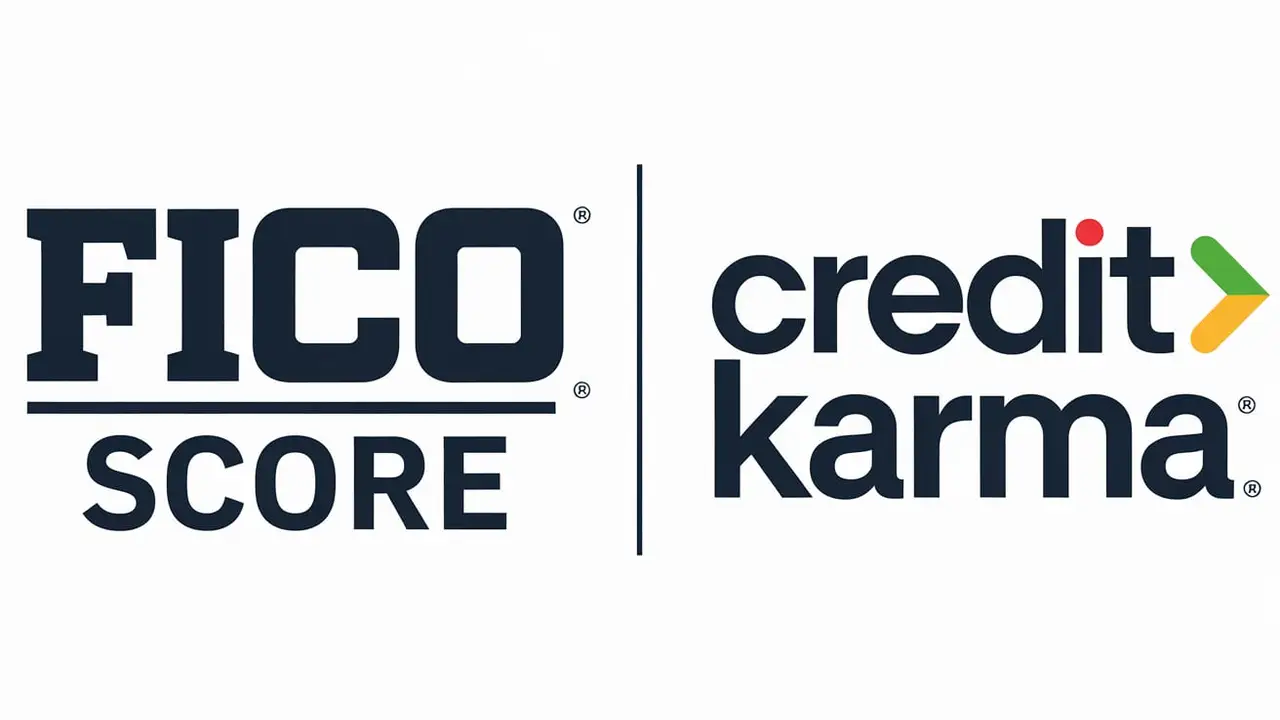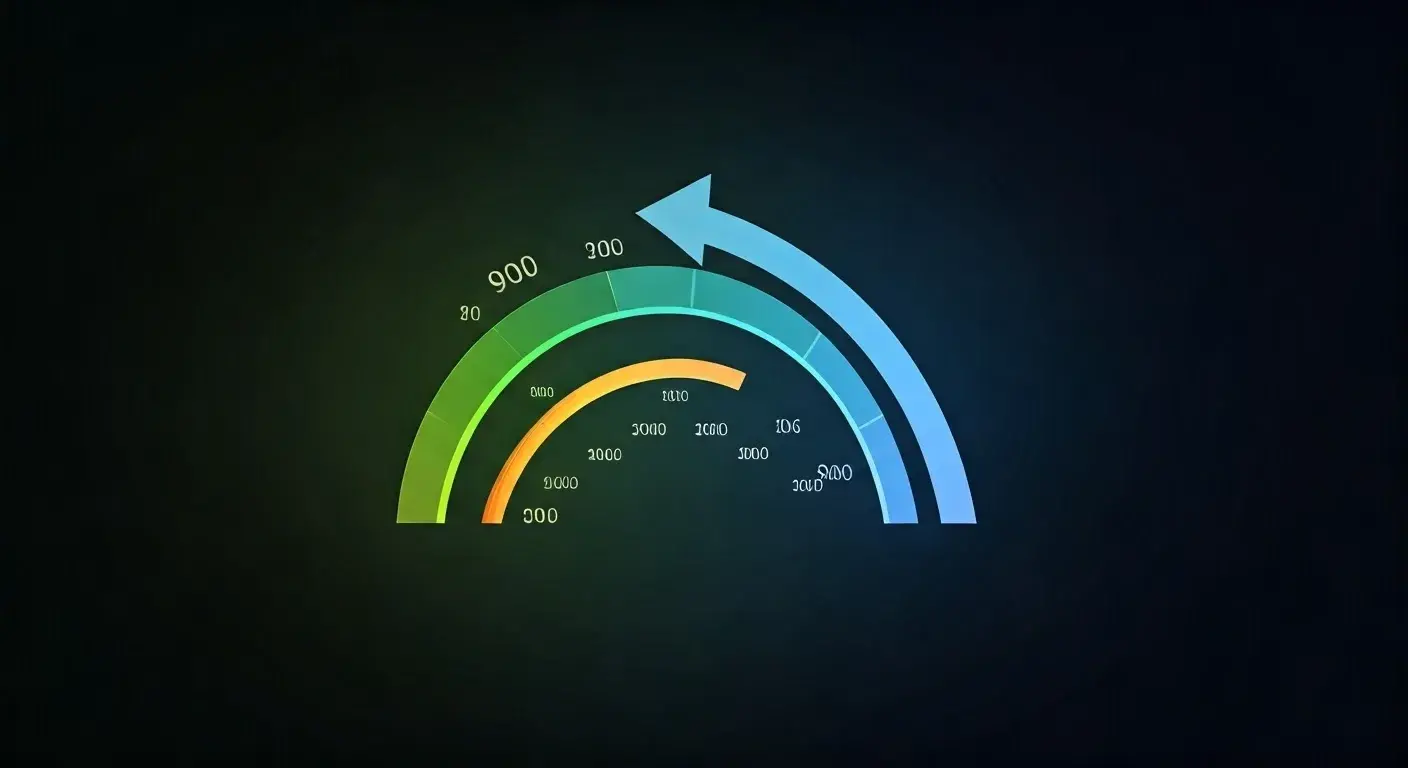-
Posted on: 05 Aug 2024

-
Understanding your credit score is crucial for financial health. This guide directly answers whether FICO scores are typically higher or lower than Credit Karma scores, explaining the nuances of each system and how to interpret your credit reports.
Understanding Credit Scores: FICO vs. Credit Karma
Navigating the world of credit scores can feel like deciphering a complex code. Many consumers encounter different scores from various sources, leading to the common question: "Is FICO usually higher or lower than Credit Karma?" The answer is not a simple yes or no, as it depends on the specific scoring models used by each service. This comprehensive guide will break down the differences, explain why discrepancies occur, and provide actionable strategies for understanding and improving your creditworthiness in 2025.
What is a FICO Score? The Gold Standard
The FICO score, developed by the Fair Isaac Corporation, is widely considered the industry standard for credit scoring. Lenders—including banks, credit card companies, and mortgage providers—rely heavily on FICO scores to assess the credit risk of potential borrowers. When a lender pulls your credit, they are most often looking at a FICO score. There are many different FICO score versions, with FICO Score 8 being the most common for general lending, and industry-specific versions like FICO Score 9 for mortgages and auto loans. These scores range from 300 to 850, with higher scores indicating lower risk and better creditworthiness.
The Importance of FICO in Lending
FICO scores are so influential because they are built on a robust, time-tested methodology that analyzes your credit history from the three major credit bureaus: Equifax, Experian, and TransUnion. The predictive power of FICO scores has been validated over decades, making them a trusted metric for financial institutions. A strong FICO score can unlock better interest rates on loans, easier approval for credit cards, and even influence rental applications or insurance premiums.
How FICO Scores Are Calculated: The Five Key Factors
FICO scores are calculated based on five main categories, each with a specific weighting. Understanding these factors is crucial for managing your credit effectively:
- Payment History (35%): This is the most significant factor. It includes whether you pay your bills on time, how late your payments are, and if you have any accounts in collections or bankruptcies. Consistent on-time payments are paramount.
- Amounts Owed (30%): This category looks at how much debt you carry, particularly your credit utilization ratio (CUR). Keeping your credit card balances low relative to your credit limits is key. A CUR below 30% is generally recommended, with below 10% being ideal.
- Length of Credit History (15%): This considers how long your credit accounts have been open and the average age of your accounts. A longer credit history generally demonstrates more experience managing credit responsibly.
- Credit Mix (10%): This factor examines the different types of credit you use, such as credit cards, installment loans (like mortgages or auto loans), and student loans. A healthy mix can show you can manage various credit products.
- New Credit (10%): This category considers how many new credit accounts you've opened recently and how many hard inquiries you have. Opening too many accounts in a short period can signal higher risk.
These percentages are approximate and can vary slightly depending on the specific FICO score version being used. However, the core principles remain consistent across most FICO models.
What is Credit Karma? A Popular Free Credit Monitoring Service
Credit Karma is a well-known financial technology company that offers free credit scores and credit reports to consumers. They partner with TransUnion and Equifax to provide access to your credit information. Credit Karma's primary business model involves offering personalized recommendations for credit cards, loans, and other financial products based on your credit profile. If you accept an offer through Credit Karma, they may receive a commission from the financial institution.
Credit Karma Scores vs. Lender Scores
It's important to understand that the scores Credit Karma provides are often not FICO scores. Instead, Credit Karma typically uses VantageScore models. VantageScore is another credit scoring system developed by the three major credit bureaus as an alternative to FICO. While VantageScore also aims to predict credit risk, its algorithms and weightings can differ from FICO's, leading to score variations.
How Credit Karma Scores Are Generated: Different Models, Different Numbers
Credit Karma primarily utilizes VantageScore models. The specific version of VantageScore can vary, but they generally follow similar principles to FICO, evaluating payment history, credit utilization, credit age, credit mix, and new credit. However, the exact calculations and the relative importance of each factor can differ. For instance, VantageScore might place a slightly different emphasis on certain aspects compared to FICO. As of 2025, Credit Karma often displays VantageScore 3.0 or VantageScore 4.0 scores, which are designed to be more consistent across bureaus than earlier versions but still distinct from FICO.
VantageScore vs. FICO Score Differences
The key differentiator lies in the proprietary algorithms. FICO has been refining its models for decades, and its scores are deeply embedded in the lending industry. VantageScore, while also a reputable model, is a more recent development and is used by a growing number of lenders, but not as universally as FICO. This fundamental difference in scoring methodology is the primary reason why your FICO score and your Credit Karma (VantageScore) score can vary.
FICO vs. Credit Karma: The Direct Comparison
So, to directly answer the question: "Is FICO usually higher or lower than Credit Karma?" There is no universal rule. Your FICO score can be higher or lower than your Credit Karma score. The difference can range from a few points to several dozen points. This variability is due to several factors:
Key Factors Causing Discrepancies:
- Different Scoring Models: As discussed, FICO and VantageScore use distinct algorithms.
- Different Credit Bureaus: Credit Karma pulls data from Equifax and TransUnion. Lenders might pull FICO scores based on data from Equifax, Experian, or TransUnion, and these reports can have slight differences.
- Data Freshness: The timing of when your credit information is updated can lead to score discrepancies.
- Specific Score Versions: Both FICO and VantageScore have multiple versions, and lenders may use different versions than what Credit Karma displays.
2025 Statistics on Score Differences:
While precise, universal statistics are hard to pin down due to the dynamic nature of credit scoring, industry observations in 2025 suggest that VantageScore scores tend to be slightly higher on average than FICO scores for a given consumer, particularly in the mid-range scores. However, this is not a guarantee. For consumers with very good or excellent credit, the difference might be negligible. For those with lower scores or specific credit profiles, the difference could be more pronounced. Some reports indicate a potential difference of 10-20 points, but it can exceed this in certain cases.
Common Score Ranges and Differences
It's important to remember that both FICO and VantageScore use similar rating scales, generally categorizing scores as follows:
Score Range FICO/VantageScore Category 800-850 Exceptional 740-799 Very Good 670-739 Good 580-669 Fair 300-579 Poor While the categories are similar, the exact score within these ranges can differ significantly between FICO and Credit Karma (VantageScore). For instance, a FICO score of 720 might correspond to a VantageScore of 735, or vice versa. The crucial takeaway is to understand the *trend* and *factors* affecting your score, rather than fixating on a single number.
Why Do Scores Differ? Key Factors at Play
The divergence between your FICO score and your Credit Karma score is a common phenomenon. Understanding the underlying reasons can help you interpret these differences and take appropriate action.
Impact of Credit Bureau Differences
Your credit report is a snapshot of your financial history as recorded by the three major credit bureaus: Equifax, Experian, and TransUnion. While these bureaus aim to collect similar information, there can be discrepancies in the data they hold. For example, a creditor might report information to one bureau but not another, or there might be reporting delays or errors. Since Credit Karma typically pulls data from Equifax and TransUnion, and lenders often pull FICO scores based on data from any of the three (or even a specific bureau for a particular loan type), these differences in the underlying credit report data directly translate into score variations.
Example: Imagine a credit card account is reported to Experian but not to TransUnion. If a lender pulls your FICO score based on Experian data, that account will influence your score. If Credit Karma is pulling from TransUnion, that same account might not be reflected, leading to a different score.
Impact of Scoring Models
The most significant driver of score differences is the use of different scoring models. FICO and VantageScore are proprietary algorithms developed independently. While they share common goals and evaluate similar credit behaviors, their formulas and the weight assigned to each factor can vary. For instance:
- Credit Utilization: FICO Score 8, a widely used model, tends to be more sensitive to high credit utilization ratios than some VantageScore versions.
- New Credit: The impact of recent credit inquiries or new accounts might be weighted differently.
- Recency of Data: How quickly the models account for recent credit activity can also cause variations.
In 2025, both FICO and VantageScore continue to evolve, with newer versions (e.g., FICO Score 10, VantageScore 4.0) incorporating more sophisticated analytics, including trended data analysis. However, the fundamental differences in their core methodologies persist.
Impact of Data Freshness
Credit bureaus and scoring models update information at different frequencies. Your credit report is not updated in real-time. When you check your score on Credit Karma, it reflects the data available to them at that moment. Similarly, when a lender pulls your FICO score, it's based on the most recently reported data available to the bureau they are using. This lag in reporting and updating can lead to score differences, especially if there have been recent changes to your credit accounts, such as a new payment or a balance change.
Scenario: You made a large payment on your credit card yesterday, significantly lowering your credit utilization. If this payment hasn't yet been reported to the credit bureau that your FICO score is based on, your FICO score might not reflect this positive change, while a more frequently updated score from Credit Karma might show it.
Impact of Account Types and Usage
The specific types of credit accounts you have and how you use them can also contribute to score differences. For example:
- Student Loans: Some FICO models might treat deferred student loans differently than VantageScore models.
- Medical Debt: Changes in how medical debt is reported (e.g., a grace period before it impacts scores) can lead to variations.
- Authorized Users: The impact of being an authorized user on someone else's account can be factored differently by various models.
In 2025, regulatory changes and industry practices continue to influence how certain account types are reported and scored, adding another layer of complexity to score comparisons.
Real-World Examples and Scenarios
To illustrate how these differences play out, consider these hypothetical scenarios:
Scenario 1: High Credit Utilization
Sarah has three credit cards. Card A has a $1,000 limit and a $900 balance. Card B has a $2,000 limit and a $1,500 balance. Card C has a $500 limit and a $400 balance. Her total credit limit is $3,500, and her total balance is $2,800. Her overall credit utilization is approximately 80% ($2,800 / $3,500). FICO Score 8 is particularly sensitive to high utilization. Sarah's FICO score might be in the "Fair" category, perhaps around 620. Credit Karma, using VantageScore, might show a slightly higher score, say 645, because its algorithm might weigh other positive factors more heavily or be less punitive on utilization in this specific instance, or the data it pulls from is slightly older.
Scenario 2: Long Credit History with Minimal Activity
David has had a credit card for 20 years, always paying it on time, but he rarely uses it, and the balance is always paid in full. His credit utilization is very low, and his payment history is perfect. His FICO score might be excellent, perhaps 810. Credit Karma might show a similar excellent score, 815, as both models reward long-standing positive payment history. The difference here is likely minimal.
Scenario 3: Recent Hard Inquiries and New Accounts
Maria recently applied for and opened two new credit cards within the last six months to take advantage of introductory offers. She also has a mortgage and an auto loan. Her FICO score might be slightly impacted by the recent credit activity, perhaps showing a score of 760. Credit Karma, using a VantageScore, might show a score of 775, as VantageScore sometimes gives less weight to recent inquiries compared to FICO, or the reporting lag means one of the inquiries hasn't fully registered yet on the Credit Karma report.
These examples highlight that the "higher or lower" question is highly individualized. It's not about one platform being inherently "better" or "worse," but rather about understanding that they provide different perspectives based on different methodologies and data sources.
Understanding Your Credit Reports: The Foundation of Your Scores
While scores are important, they are merely a summary of the information contained within your credit reports. Both FICO and Credit Karma (through its access to TransUnion and Equifax) rely on the data in these reports. Therefore, understanding your credit reports is fundamental to managing your credit health.
What Information is in a Credit Report?
A credit report is a detailed record of your credit history. It typically includes:
- Personal Information: Name, address, Social Security number, date of birth, and employment history.
- Credit Accounts: Details of all your credit cards, loans (mortgage, auto, student, personal), and lines of credit. This includes the lender's name, account number, date opened, credit limit or loan amount, current balance, and payment history (on-time payments, late payments, missed payments).
- Public Records: Information about bankruptcies, liens, judgments, and collections.
- Credit Inquiries: A record of who has accessed your credit report. "Hard inquiries" occur when you apply for credit and can slightly lower your score. "Soft inquiries" occur for background checks or when you check your own credit and do not affect your score.
How to Access Your Free Credit Reports
You are entitled to a free copy of your credit report from each of the three major credit bureaus (Equifax, Experian, and TransUnion) every 12 months. The official source for these free reports is AnnualCreditReport.com. Due to the COVID-19 pandemic and ongoing consumer protection measures, these reports are often available for free more frequently in 2025. It's highly recommended to check your reports regularly from all three bureaus to ensure accuracy and identify any potential fraud or errors.
Strategies for Improving Your Credit Score
Regardless of whether your FICO score or your Credit Karma score is higher, the goal is to improve your overall creditworthiness. The factors that influence both FICO and VantageScore are largely the same, so focusing on these core principles will benefit your credit health across the board.
Making On-Time Payments: The Cornerstone of Good Credit
This is the single most important factor. Payment history accounts for the largest portion of your credit score. Set up automatic payments or payment reminders to ensure you never miss a due date. Even a single 30-day late payment can significantly drop your score.
Reducing Credit Utilization: A Powerful Lever
Aim to keep your credit utilization ratio (CUR) low, ideally below 30% for each card and overall. Paying down balances on your credit cards is one of the quickest ways to see a score improvement. Consider making multiple payments throughout the month to keep your reported balance low.
Calculating Your Credit Utilization Ratio
To calculate your CUR for a single card: (Current Balance / Credit Limit) * 100. For your overall CUR: (Total Balances Across All Cards / Total Credit Limits Across All Cards) * 100.
Managing Credit Age: The Value of Longevity
The longer you've had credit accounts open and in good standing, the better it is for your score. Avoid closing old, unused credit cards unless there's a compelling reason (like a high annual fee you can't justify). Keeping older accounts open helps maintain a longer average age of credit history.
Limiting New Credit Applications: Avoiding the Score Dip
Each time you apply for new credit, it typically results in a hard inquiry on your credit report, which can temporarily lower your score. While a few inquiries won't tank your score, applying for many new accounts in a short period can signal increased risk. Only apply for credit when you genuinely need it.
Diversifying Your Credit Mix: A Subtle Influence
Having a mix of credit types, such as credit cards, installment loans (like a mortgage or auto loan), can be beneficial. However, this factor is less impactful than payment history and utilization. Don't open new accounts solely to diversify your credit mix; focus on managing your existing accounts responsibly.
What to Do If You Find Errors on Your Credit Report
If you discover inaccuracies on your credit reports—such as accounts that don't belong to you, incorrect late payment notations, or wrong balances—it's crucial to dispute them. You can file a dispute directly with the credit bureau that holds the inaccurate information. They are required by law to investigate your claim. Correcting errors can lead to a significant improvement in your credit scores.
Dispute Process:
- Identify the error on your credit report.
- Gather supporting documentation (statements, payment confirmations, etc.).
- File a dispute online, by mail, or by phone with the respective credit bureau.
- The bureau has approximately 30 days to investigate and respond.
Conclusion: Navigating Your Credit Journey
In summary, the question of whether FICO is usually higher or lower than Credit Karma scores has no single, definitive answer. Your FICO score and your Credit Karma score (typically a VantageScore) will likely differ due to distinct scoring models, variations in data from credit bureaus, and the timing of information updates. While FICO remains the gold standard for most lenders, Credit Karma offers valuable free insights into your credit health. The key takeaway for 2025 is to understand that both scores are indicators, and the underlying factors influencing them—payment history, credit utilization, credit age, credit mix, and new credit—are universal. Focus on maintaining positive credit habits, regularly reviewing your credit reports from AnnualCreditReport.com, and disputing any inaccuracies. By doing so, you'll build a strong credit foundation that will serve you well, regardless of which specific score you're looking at.











